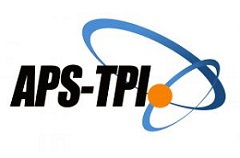The Effectiveness of Digital Teaching Materials Based on Google Education to Improve Student's Critical Thinking Ability
Abstract
Keywords
Full Text:
PDFReferences
Aizikovitsh-Udi, E., & Cheng, D. (2015). Developing Critical Thinking Skills from Dispositions to Abilities: Mathematics Education from Early Childhood to High School. Creative Education, 06(04), 455–462. https://doi.org/10.4236/ce.2015.64045
Aprilia, T., Sunardi, S., & Djono, D. (2017). Penggunaan Media Sains Flipbook dalam Pembelajaran IPA di Sekolah Dasarr. Teknodika, 15(2), 75. https://doi.org/10.20961/teknodika.v15i2.34749
Dick, W., Carey, L., & Carey, J, O. (2009). The Systematic Design Of Intruction. Emeritus.
Ennis, R. H. (1989). A Taxonomy of critical thinking. Dispositions and abilities. In J. B. Baron, and R. J. Sterngerg (Eds.), Teaching for Thinking,. Freeman.
Ernawati, I., dan Sukardiyono, T. (2017). (2017). Uji Kelayakan Media Interaktif Pada Mata Pelajaran Administasi Server. Jurnal Elinfo (Electronics, Informatics and Vocational Education), 2(2).
Google. (2019). Diakses dari https://edu.google.com pada tanggal 4 September 2019.
Huang R, J. Michael Spector, J. Y. (2019). Educational Technology A Primer for the 21st Century. SPRINGER. https://doi.org/10.1007/978-981-13-6643-7
Insani, M. D. (2016). Studi Pendahuluan Identifikasi Kesulitan Dalam Pembelajaran Pada Guru IPA SMP Se-kota Malang. Jurnal Pendidikan Biologi, 7(2), 81–93.
Kemendikbud. (2014). Kurikulum 2013 Pedoman Guru Mata Pelajaran Fisika untuk : Sekolah Menengah Atas (SMA)/Madrasah Aliyah (MA). Badan Penelitian Dan Pengembangan Pusat Kurikulum Dan Perbukuan, 53(9), 1689–1699.
Klimovienė, G., Urbonienė, J., & Barzdžiukienė, R. (2006). Developing critical thinking through cooperative learning. Kalbų Studijos, 9.
Maulana, I., Suryani, N., & Asrowi, A. (2019). Augmented Reality: Solusi Pembelajaran IPA di Era Revolusi Industri 4.0. Proceedings of The ICECRS, 2(1), 19–26. https://doi.org/10.21070/picecrs.v2i1.2399
Michael, Odewumi & Adebisi, M. (2019). FOSTERING GOOGLE APPS FOR EDUCATION (GAfE): THE CONCEPTUAL. FRAMEWORK.
Nash, J. (2015). Future of online education in crisis: A call to action. Turkish Online Journal of Educational Technology, 14(80).
Puspendik. (2019). Hasil laporan ujian nasional capaian wilayah & satuan pendidikan. Diakses Dari Https://Puspendik.Kemdikbud.Go.Id/Hasil-Un/ Pada Tanggal 26 Agustus 2019.
Putria, A., Akhyar, M., & Sutimin, L. A. (2017). Meningkatkan Hasil Belajar Matematika Siswa Kelas VII Menggunakan E-Book Berbasis Pendekatan RME. Teknodika, 15(2), 25. https://doi.org/10.20961/teknodika.v15i2.34744
Risnawati, Amir, Z., & Sari, N. (2018). he development of learning media based on visual, auditory,and kinesthetic (VAK) approach to facilitate students’ mathematical understanding ability. Journal of Physics: Conference Series, 1028, 1(9).
Ristekdikti. (2018). Era Revolusi Industri 4.0 Saatnya Generasi Millenial Menjadi Dosen Masa Depan. Sumber Daya IPTEK Dan DIKTI.
Rodrigues, A., & Oliveira, M. (2008). The Role Of Critical Thinking In Physics Learning (Versi elektronik). Centre for Educational Research and Department of Education, 6.
Ruwaidah, U., Amali, K., Campus, P. P., & Selangor, U. (2017). The usage of google apps for education (gafe): higher education, malaysia. 3(8), 17–22.
Seels, B.B. & Richey, R. C. (1994). Instructional technology: the definition and domains of the field. (Terjemahan Yusuf Hadi Miarso, Dewi S Prawiradilaga & Raphael Rahardjo. Unit Percetakan UNJ.
Shaharanee, I. N. M., Jamil, J. M., & Rodzi, A. S. S. M. (2016). The application of Google Classroom as a tool for teaching and learning. Journal of Telecommunication, Electronic and Computer Engineering, 8(10), 5–8.
Sukmadinata, S. N. (2016). Metode Penelitian Pendidikan. Rosdakarya.
Syah, M. B., Asrowi, A., & Ardianto, D. T. (2019). Permasalahan dan Peluang Pendidikan di SMK pada Era Teknologi Digital. Teknodika, 17(2), 85. https://doi.org/10.20961/teknodika.v17i2.34964
Teknowijoyo, F. (2020). Media Pembelajaran Berbasis Google Edukasi untuk Meningkatkan Hasil Belajar Peserta Didik pada Pelajaran Fisika di SMP. Journal of Curriculum Indonesia, 3(1), 30–38. http://hipkinjateng.org/jurnal/index.php/jci/article/view/27
Ufairiah, Q. R., & Laksanawati, W. D. (2020). Identifikasi Masalah Kemampuan Berpikir Kritis Siswa Guna Mengetahui Pengaruh Model Dan Pendekatan Pembelajaran. Prosding Seminar Nasional Pendidikan Fisika, 2(1), 75–81. https://ojs.unsiq.ac.id/index.php/semnaspf/article/view/1378
Ventayen, R.J., Estira, K.L., Guzman, M.J., Cabaluna, C.M., & Espinosa, N. N. (2017). Usability Evaluation of Google Classroom : Basis for the Adaptation of GSuite E-Learning Platform. Asia Pacific Journal of Education, Arts, and Sciences, 5(1), 47–51.
Widhy, P. H. (2013). Integrative science untuk mewujudkan 21. Seminar Nasional MIPA 2013, 1–13. http://staffnew.uny.ac.id/upload/198307302008122004/penelitian/Integrative+Science.pdf
Zein, M. (2016). Peran Guru dalam Pengembangan Pembelajaran. Jurnal Inspiratif Pendidikan, 5(2), 274–285. http://103.55.216.56/index.php/Inspiratif-Pendidikan/article/view/3480
Refbacks
- There are currently no refbacks.





.png)













